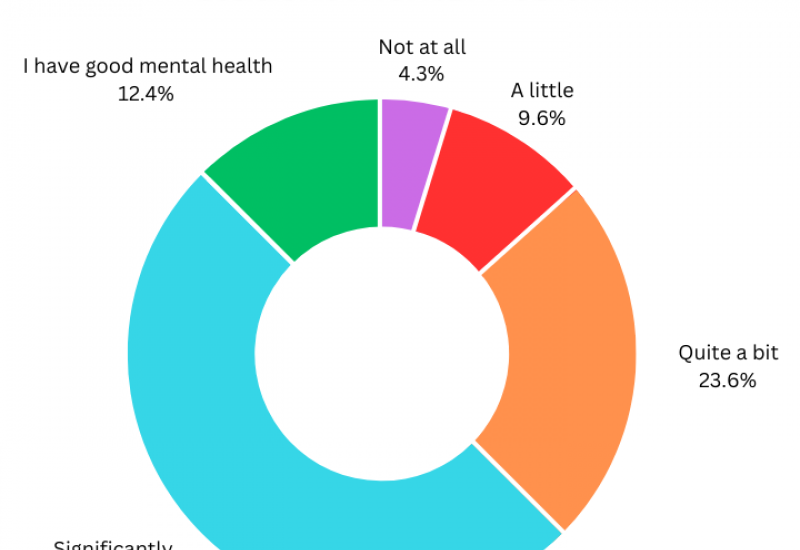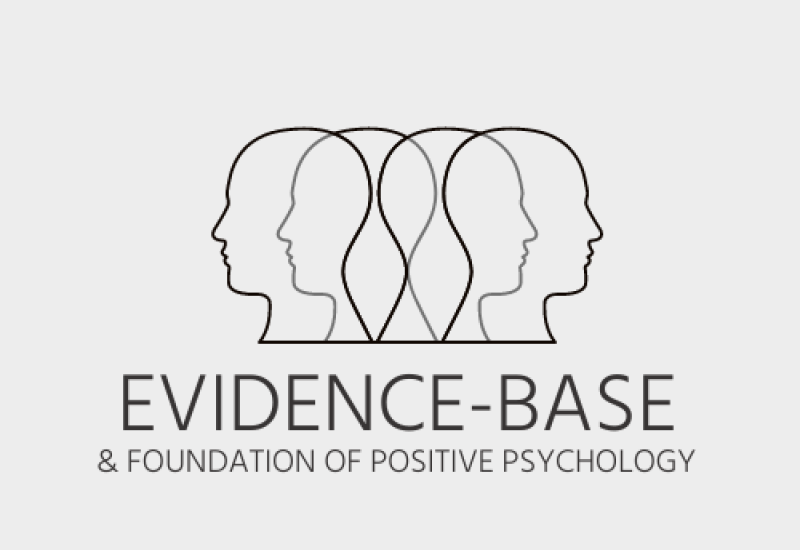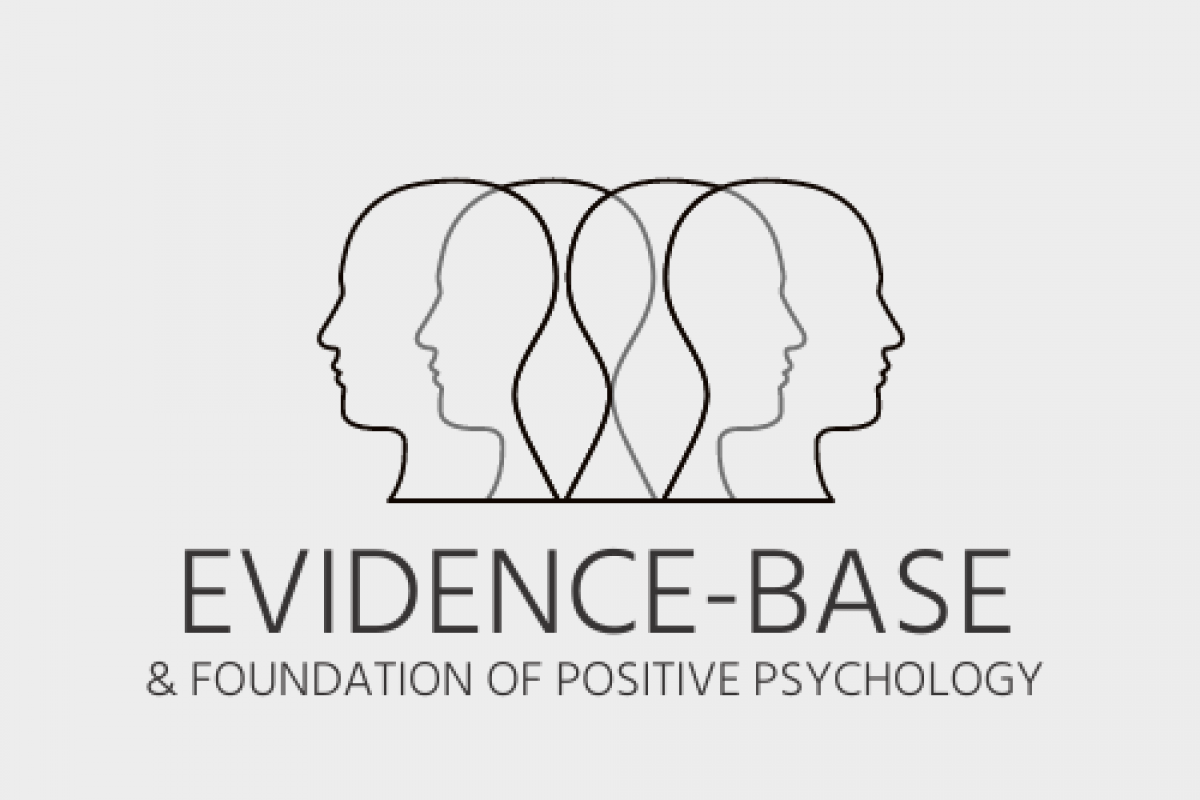
Outlining the Evidence-Base and 3 Pillars for MyStrengths
This course is built on 3 development pillars to promote positive mental health and self-belief.
The foundational sciences
-
- Positive (Strength-Based) Psychology,
- CASEL model of Social & Emotional Learning (SEL),
- (Applied) Cognitive Behaviour Therapy
The Methodology, Development and Efficacy of content and Assessment
-
-
- Assumption
- Development
- Evaluation
- Revision
- Evaluation
-
Evaluation of desired student outcomes
-
- Students would grow in self-esteem and confidence;
- Students would grow in their understanding of self and others;
- Students improve mental health.

FOUNDATIONAL SCIENCES
1. Positive Psychology – the shift to a strengths-approach
The history of Positive Psychology is best summed up in a great piece of work by the Positive Psychology Institute. We have condensed it and added some of our own thoughts to offer a brief history of strength-based psychology. For the full article, visit https://positivepsychology.com/founding-fathers/
Traditional Deficit Approach
Historically, the attention to “what is wrong” has been central to the work of researchers and therapists aiming to help people get back to normal. During the second half of the 19th century and the early part of the 20th, Psychologists such as Sigmund Freud, Adler, and Carl Jung committed their research and therapy to understanding human disorder and treating abnormal behaviours and the associated mental illnesses. As such, psychology was concerned with curing mental disorders, such as schizophrenia, bipolar and human complexes of various kinds.
After the second world war, the focus of psychology turned towards the dark recesses of the human mind and away from the deeper well-springs of human energy and potential. The DSM (Diagnostic and Statistical Manual) became psychology’s Bible, with the standardisation of mental illness classifications. Within the DSM-IV, there are 297 disorders identified, but no attention given to diagnosing the conditions that help a human flourish, grow and succeed.
As highlighted by Martin Seligman, in his 2008 TED talk on Positive Psychology, the negative focus of psychology resulted in three major drawbacks for the field:
- Psychologists became victimologists and pathologizers, focused only on human deficit and trouble than studying what makes people flourish;
- They forgot about improving normal lives and high talent (the mission to make relatively untroubled people happier, more fulfilled, more productive);
- With a desire to repair damage, they largely ignored the areas where people were already functional, successful, and talented.
So much focus was given to bringing people from -5 up to 0, but no one was studying how to help people move from a 0 to a +5.
The Emerging Strengths Approach
It was not until recently that the field of psychology began expanding its research criteria to study what makes people thrive, instead of what makes people sick. While previous waves of psychology focused on human flaws, overcoming deficiencies, avoiding pain, and escape from unhappiness, positive psychology focuses on well-being, contentment, excitement, learning and performance, the pursuit of happiness, and meaning in life.
Dissatisfied with the disease model, humanist psychologists, such as Abraham Maslow, Carl Rogers, and Eric Fromm helped renew interest in the more positive aspects of human nature. Then, in 1998, Martin Seligman was elected President of the American Psychological Association. Soon “Positive Psychology” became the theme of his term as president, and he is widely seen as the father of contemporary positive psychology (About Education, 2013).
In his famous speech, Seligman states:
“The most important thing we learned was that psychology was half-baked. We’ve baked the part about mental illness, about repair damage. The other side’s unbaked, the side of strength, the focus on talent, excitement, engagement and what we’re good at.”
The strength-based perspective is not about denying one’s weakness or hiding away from problems. Instead, it offers a different perspective on resources and the strengths each person has to tackle those problems. It studies personality in light of our best traits, with the knowledge that our differences offer varied ways to learn, relate, problem solve, and flourish.
The Strength-Based Approach to Learning
Strengths can be defined as a person’s intellectual, physical and interpersonal skills, capacities, dispositions, interests and motivations.
The Department of Education has developed a guide to strength-based learning and development (2012) suggesting that, “the strength-based approach represents a paradigm shift—a movement away from a deficit-based approach which can lead to a long list of things considered to be ‘wrong’ with a child’s learning and development or things a child cannot do. The deficit-based model fails to provide sufficient information about strengths and strategies to support a child’s learning and development.
In response to the limitations associated with the deficit-based approach, a growing body of research and evidence has shown support for the strength-based approach that encourages educators to:
- Understand that children’s learning is dynamic, complex and holistic;
- understand that children demonstrate their learning in different ways;
- start with what’s present—not what’s absent—and focus on what works for the student.”
Underlying Principles of Strength-Based learning
Strength-based approach to learning and development starts with some foundational principles that assume:
- All people have strengths and abilities;
- Children grow and develop from their strengths and abilities;
- The problem is the problem—the child is not the problem;
- When children and those around them (including educators) appreciate, understand and know the child’s strengths, then the child is better able to learn and develop.
Strengths-Approach in the Wellbeing Framework for Schools
Across Australia, school wellbeing frameworks and curriculums are increasingly being informed by a strengths-based approach. The MyStrengths methodology recognises that all students have strengths and abilities that need to be nurtured. Teachers and school leaders are encouraged to help students discover knowledge and understanding about themselves.
The Department of Education (The Wellbeing Framework for Schools, 2021) is taking a shift away from a more traditional ‘deficit-based’ view of listing what is wrong with a student and their learning. In contrast a strength-based wellbeing approach focuses on the opportunities to help students to grow in their cognitive, physical, social, emotional and spiritual development.
Everyone has a part to play: the school community, parents, executives, teachers and students at creating a safe, resilient, respectful, and supportive environment. This allows students to connect, thrive and succeed. Student wellbeing is enhanced when schools draw on their own expertise and the expertise of those in the community.

2. Social & Emotional Learning (SEL)
The Strengths Facilitator Course delivers training based on the CASEL model of the 5 human competencies (self-awareness, social-awareness, self-management, responsible decision-making, and relationship skills). Our model directly and implicitly helps adolescents better understand themselves and others.
We train teachers in how to implement SEL in 2 main ways:
2.1 Empowering self and social awareness:
The 2021 manual for SEL by Jones, Brush, Ramirez and team, say that “SEL is the process through which all young people and adults acquire and apply the knowledge, skills, and attitudes to develop healthy identities, manage emotions and achieve personal and collective goals, feel and show empathy for others, establish and maintain supportive relationships, and make responsible and caring decisions.”
The MyStrengths system offers students a clear, compelling way to understand self and why we do what we do. Where a person’s Negativity Bias makes us highly aware of our weaknesses, the adolescent brain struggles to identify their strengths. Many do not have language or resources that help them understand these qualities. Yet, our strengths form a significant foundation for developing healthy identities and understanding our drivers and motives.
When fully implemented into a school system, students, educators and parents are equipped to understand the unique and natural ways each child functions, relates, thinks and learns.
2.2 Understanding others & increased empathy across all relationships:
The discovery of strengths is best implemented within a group context. When individuals discover and focus on their own strengths, it is proven to increase self-belief, awareness and confidence. However, when discovered in a group setting, a student’s social awareness is developed as they understand other personalities who are different from their own.
Additionally, creating equity for learning is a central theme of SEL, evident in the training of Teachers to understand the vast differences in learning style, cognitive capacity and centres of motivation.
Evaluation from over 40,000+ students, shows the impact on self-esteem and confidence; understand of self and others; and the improvement in mental health.
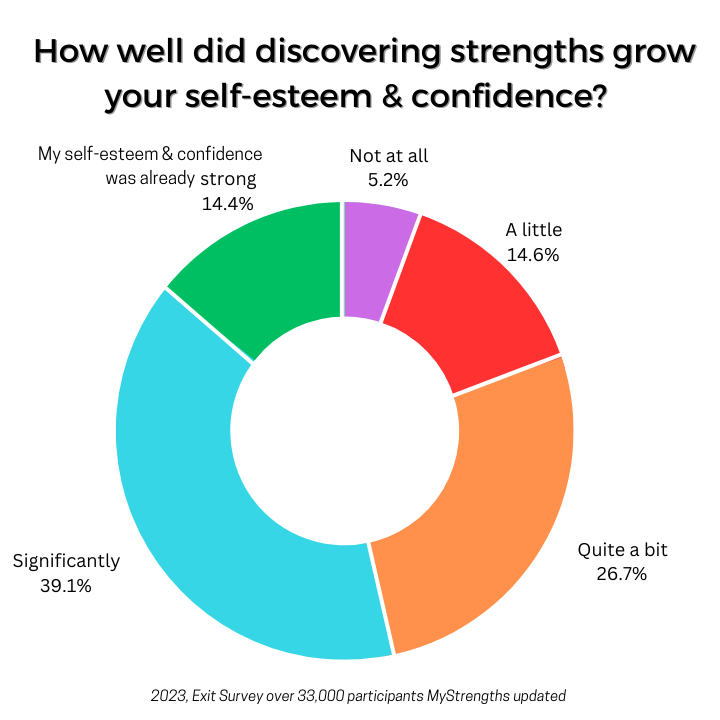
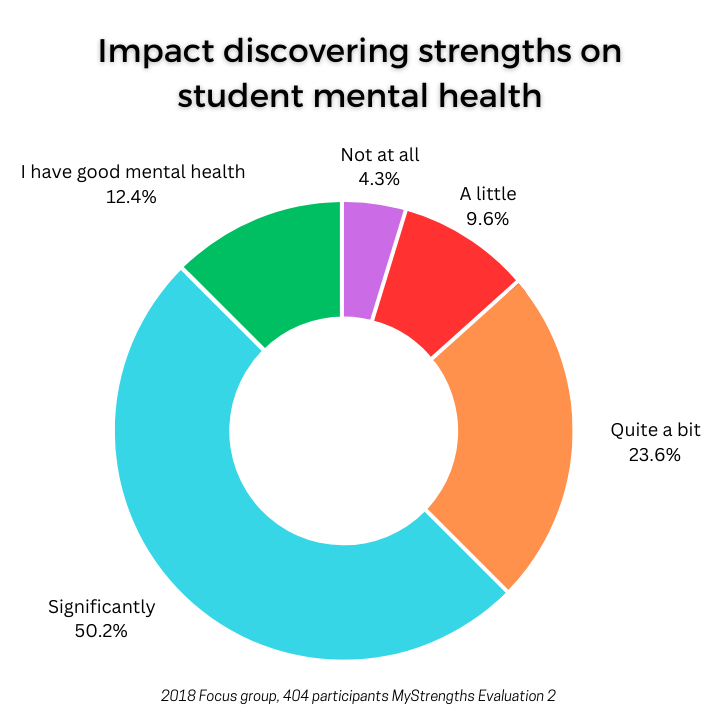
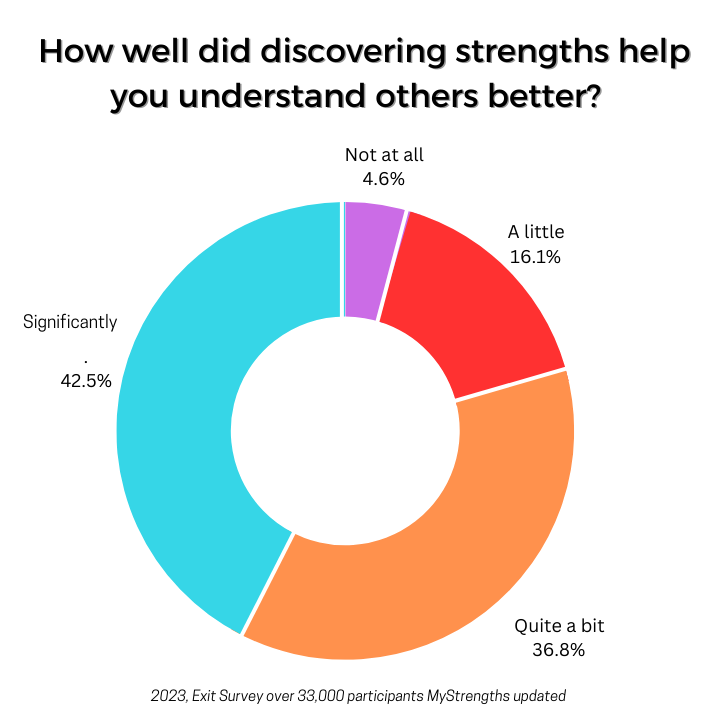
3. (Applied) Cognitive Behaviour Therapy
CBT is a proven therapy model that helps clients/participants understand how their thoughts, feelings, physical sensations and actions are interconnected and can trap you in a negative cycle (Rachman). MyStrengths uses a CBT approach by challenging the prevalent negativity bias with a special focus on identity, learning capability and self-belief. We directly shift a student’s focus from what’s wrong to what’s right, providing them language, insights and understanding for their natural strength qualities.
As challenges, anxiety and fear rise, students are empowered with tools to draw on their strengths and focus on their capabilities and strengths.
As MyStrengths was initially developed within an Adolescent Therapy environment, the process invites participants to reframe thoughts (particularly about self) from destructive narratives that would self-sabotage, toward strengths and resilience. The MyStrengths approach implicitly includes the key steps of CBT in:
- identifying specific problems or issues in a person’s life and learning.
- becoming aware of unproductive thought patterns and how they can impact your life
- Reshaping our thoughts about self and circumstances, in a way that changes how you feel
- Adopting new thoughts and behaviours, and making these central to life and habits
We offer training in best-practice technique for helping adolescents challenge their own prevalent negative scripts, and replace them with concrete ideas of self and their world. The strengths-approach also shifts the daily way we view and engage with students as we deliberately change our own perspective on student behaviour and engagement. We take CBT themes in bringing change to our teaching practice and youth work.
Read More? The MyStrengths Methodology and Development evidence-base is here.
